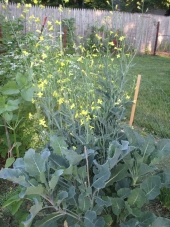
 3
3




 2
2







The bone-white seed contains more than 40% protein and 20% fat and has been used as a food by Andean people since ancient times, especially in soups, stews, salads, and by itself mixed with boiled maize.

Invasive plants are Earth's way of insisting we notice her medicines. Stephen Herrod Buhner
Everyone learns what works by learning what doesn't work. Stephen Herrod Buhner
 1
1




 1
1




Gardening in Montreal (indoors, urban, 6b) and the Laurentians (sandy to sandy loam, boreal forest, 4a)
 1
1




Gardening in Montreal (indoors, urban, 6b) and the Laurentians (sandy to sandy loam, boreal forest, 4a)
 1
1




Patrick Marchand wrote:Someone on Mastodon shared a link about the history of lupine cultivation with me: https://lupins-bk.blogspot.com/2006/07/history-of-lupin-domestication.html
It covers mostly european lupine, but does talk about tarwi.




Patrick Marchand wrote:I did not know that there where american lupine species ! This brought me to discover the Sundial Lupine (lupinus perennis) a cold hardy (zone 3) perennial lupine. I wonder if anybody here grows it for food ? I'm guessing the seeds are smaller and the plants less productive than the domesticated tarwi, but targeted breeding could improve that. It would make a great addition in a permaculture garden.
I dont know if hybridizing with tarwi is possible, but it might not be a good idea, since the sundial lupine is the only host plant for blue karder butterfly caterpilars and these are endangered I believe. I guess any responsible breeding project would have to give special attention to it's continued suitability for blue karder caterpilars.
Mandrake...takes on and holds the influence
of the devil more than other herbs because of its similarity
to a human. Whence, also, a person’s desires, whether good
or evil, are stirred up through it...
-Hildegard of Bingen, Physica

|
Would you like to try a free sample? Today we are featuring tiny ads:
2024 Permaculture Adventure Bundle
https://permies.com/w/bundle
|

